Vitamin K Foods on Warfarin: How to Eat Consistently for Stable Blood Thinners
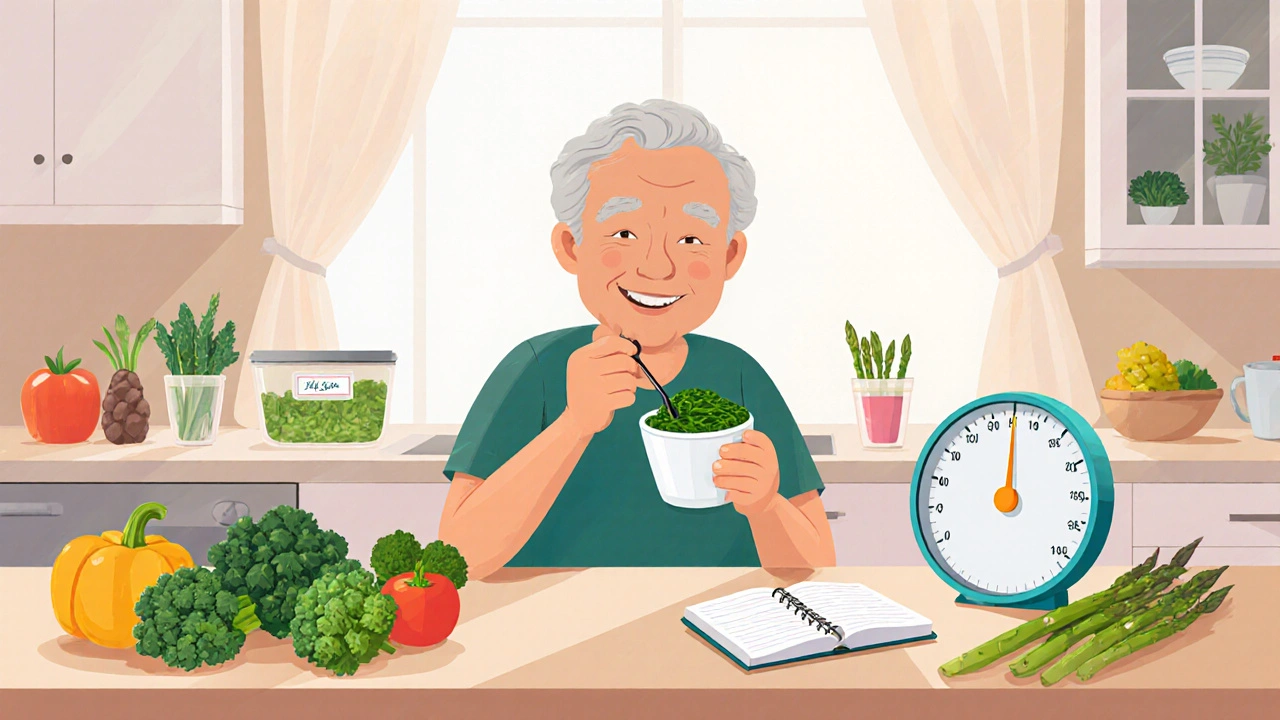
When you're on warfarin, your diet isn't just about eating healthy-it's about eating consistent. A single large serving of kale or spinach can throw your INR off in just a few days. But cutting out all green vegetables? That’s not the answer either. The truth is, millions of people on warfarin stabilize their blood thinning not by avoiding vitamin K, but by eating the same amount every day.
Why Vitamin K Matters So Much on Warfarin
Warfarin works by blocking your body’s use of vitamin K, which is essential for making clotting factors. Without enough vitamin K, your blood takes longer to clot-good if you're trying to prevent dangerous clots. But if you suddenly eat way more vitamin K than usual, your body can make those clotting factors again. That drops your INR, and suddenly, your blood is clotting too fast.That’s why a big bowl of cooked spinach can cause your INR to drop from 2.5 to 1.8 overnight. And if you go from eating spinach daily to skipping it for a week? Your INR can spike, raising your risk of bleeding. The goal isn’t to eliminate vitamin K-it’s to keep it steady.
The American Heart Association and the American College of Cardiology both say: Don’t restrict. Maintain consistency. Studies show patients who eat 90-120 micrograms of vitamin K daily with little day-to-day variation spend 75-80% of their time in the ideal INR range (2.0-3.0). Those who swing wildly? They’re lucky to hit 60%.
Which Foods Are High in Vitamin K?
Not all vegetables are created equal when it comes to vitamin K. Some are loaded, others are mild. Here’s what you need to know:- One cup of cooked spinach = 889 µg
- One cup of cooked kale = 547 µg
- One cup of cooked collard greens = 772 µg
- One cup of cooked broccoli = 220 µg
- Half a cup of asparagus = 70 µg
- Half a cup of green beans = 14 µg
Notice the difference between raw and cooked? Cooking concentrates vitamin K. A cup of raw spinach has about 145 µg. Cook it down, and it jumps to nearly 900 µg. That’s why portion size and preparation matter just as much as what you eat.
Other sources include Brussels sprouts, cabbage, and parsley. Even some oils like soybean and canola oil contain vitamin K. And don’t forget fermented foods-natto, a Japanese soy product, is packed with vitamin K2, which also affects warfarin.
Consistency Over Restriction: The Real Rule
For years, patients were told to avoid greens entirely. That advice is outdated-and dangerous. People who try to cut out vitamin K often end up with wild INR swings because they eat it accidentally. One bite of a salad after weeks of avoidance can cause a sudden drop in INR. That’s when emergencies happen.Dr. John Fanikos at Brigham and Women’s Hospital puts it simply: “Patients who attempt to eliminate vitamin K often experience dangerous INR fluctuations when they inadvertently consume even small amounts.”
Instead, aim for a daily target of 90-120 µg. That’s roughly one cup of cooked spinach, or two cups of raw spinach, or a mix of other veggies like broccoli and asparagus. The key? Do it every day. Same portion. Same time. Same food.
One patient on the American Heart Association’s support forum said: “I eat exactly one cup of baby spinach at breakfast every day. My TTR jumped from 52% to 81% in six months.” That’s not luck. That’s consistency.
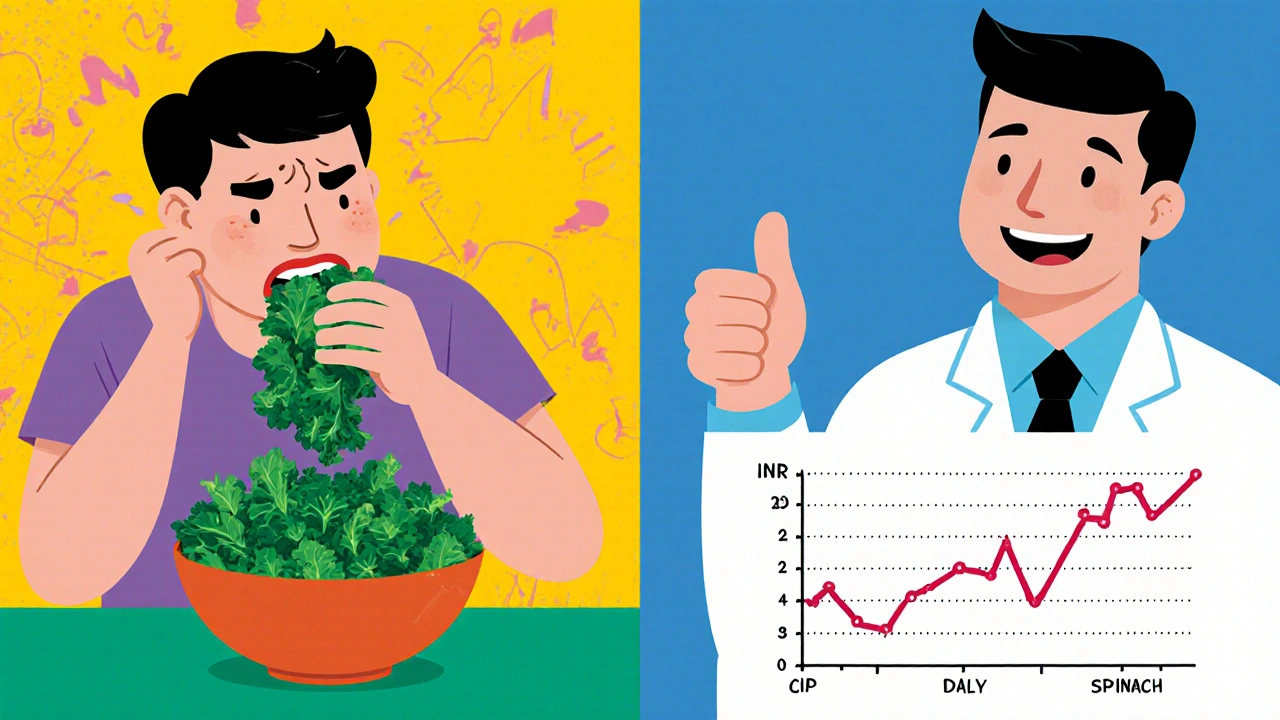
What About Supplements and Meal Replacements?
It’s not just vegetables. Many supplements, protein shakes, and medical nutrition drinks contain hidden vitamin K.- Ensure® = 50 µg per serving
- Boost® = 55 µg per serving
- Some multivitamins have 50-100 µg of vitamin K
If you take one of these daily, that’s part of your vitamin K total. If you start taking it only on days you feel “weak,” you’re creating inconsistency-and that’s a recipe for INR trouble.
Same goes for antibiotics. They kill gut bacteria that make vitamin K2. If you’re on antibiotics for a week, your body’s vitamin K production drops by up to 70%. That can cause your INR to rise. Tell your doctor if you’re on antibiotics-they may need to adjust your warfarin dose temporarily.
How to Build a Consistent Eating Pattern
Sticking to a daily vitamin K target sounds simple. But life gets messy. Here’s how to make it work:- Choose one high-K food to eat daily. Pick spinach, kale, or broccoli. Stick with it. Don’t rotate. Your body learns the pattern.
- Measure your portions. Use a measuring cup. Don’t eyeball it. A handful of spinach isn’t the same as a cup.
- Plan meals ahead. Cook a big batch of greens on Sunday. Portion them out. Eat the same amount every day.
- Track your intake. Use apps like MyFitnessPal or CoumaDiet. They’re synced to USDA data and show vitamin K content per serving.
- Keep a food diary. Even just writing down “1 cup cooked spinach” each day helps you spot patterns before your INR goes off track.
Patients who use a food diary are 89% more likely to maintain stable INR levels, according to the National Anticoagulation Registry. It’s not about perfection-it’s about awareness.
What to Do When Things Go Wrong
Even with the best plans, things happen. You eat a big salad at a restaurant. You get sick and skip meals. You forget your spinach.If you eat a huge amount of vitamin K (like 3 cups of kale), expect your INR to drop in 3-5 days. Call your anticoagulation clinic. They may increase your warfarin dose.
If you skip your usual greens for a few days, your INR might rise. Don’t panic. Don’t double your warfarin dose. Just get tested. Your provider can adjust accordingly.
Illness is another trigger. If you have the flu or can’t eat for 48 hours, your INR can rise by 0.3-0.6 units. That’s why it’s smart to have a “sick day plan” with your doctor-maybe a temporary dose tweak or more frequent INR checks.
Why Some People Still Get Bad Advice
Despite clear guidelines, many patients still hear: “Avoid all leafy greens.” A 2022 study found 42% of patients were told to restrict vitamin K by their providers-even though major medical groups have rejected that advice for years.Old habits die hard. Some doctors learned this advice decades ago. Others rely on outdated handouts from hospitals. A review of patient materials found 32% contained incorrect or conflicting info.
It’s especially common in older adults. Over 72% of warfarin users are over 65, and they’re more likely to get outdated advice. That contributes to lower INR stability in this group.
If your doctor tells you to avoid spinach, ask: “Is this based on current guidelines?” Point them to the American Heart Association or the Anticoagulation Forum’s 2023 recommendations. You’re not being difficult-you’re protecting your health.
The Future: Tech and Better Education
New tools are making consistency easier. Apps like CoumaDiet and INR Tracker Pro let you log meals and predict how your INR might react. One 2023 study showed smartphone-based tracking improved time in therapeutic range by over 12%.There’s even a new warfarin formulation, CoumaSmart™, currently in late-stage trials. It’s designed to be less sensitive to vitamin K changes. But until it’s widely available, consistency remains your best tool.
The Anticoagulation Forum launched a Vitamin K Consistency Certification Program in 2023 to train dietitians nationwide. Better education is coming-but you don’t have to wait. Start today.
Bottom Line: Eat the Same, Every Day
You don’t need to be a nutritionist. You don’t need to count every microgram. Just pick one food with vitamin K-spinach, broccoli, kale-and eat the same portion every day. No more, no less.That’s it. That’s the whole strategy.
Warfarin works. But only if your diet doesn’t keep surprising it. Consistency isn’t glamorous. It’s not trendy. But it’s the difference between living safely and ending up in the ER because your INR went off the rails.
Stable INR means fewer blood tests. Fewer dose changes. Fewer scary calls from your doctor. And most of all-it means you’re in control.
Can I eat spinach if I’m on warfarin?
Yes, you can-and you should, if you eat the same amount every day. One cup of cooked spinach has about 889 µg of vitamin K. If you eat that daily, your body adjusts, and your INR stays stable. The problem isn’t spinach-it’s inconsistency. Skipping it one day and eating three cups the next is what causes dangerous INR swings.
Should I avoid all green vegetables on warfarin?
No. Major medical organizations, including the American Heart Association and the American College of Cardiology, explicitly advise against restricting vitamin K. Cutting out greens leads to unpredictable INR changes when you eat them again. Consistent intake is safer and more effective than avoidance.
How much vitamin K should I eat daily on warfarin?
Aim for 90-120 micrograms per day. That’s roughly one cup of cooked spinach, or a mix of other veggies like broccoli and asparagus. The goal is not to hit a magic number, but to keep your daily intake within a narrow range. A variation of less than 20% from day to day is ideal.
Does cooking affect vitamin K levels?
Yes, cooking concentrates vitamin K. One cup of raw spinach has about 145 µg. When you cook it, the volume shrinks, but the vitamin K stays the same-so you end up with nearly 900 µg per cup of cooked spinach. Always measure cooked portions if you’re tracking intake. Raw is safer for small amounts; cooked requires more precision.
Can antibiotics affect my INR?
Yes. Antibiotics kill gut bacteria that produce vitamin K2. This can cause your INR to rise, even if your diet hasn’t changed. If you’re on antibiotics, monitor your INR more closely and tell your anticoagulation clinic. You may need a temporary dose adjustment.
Are vitamin K supplements safe on warfarin?
Only if you take them every day, at the same dose. Taking a 100 µg supplement one day and skipping it the next will cause INR swings. Some studies show that stable, daily supplementation (100-150 µg) can actually improve INR stability. But never start or stop a supplement without talking to your doctor.
What should I do if I eat too much vitamin K?
Don’t panic. Don’t change your warfarin dose on your own. Contact your anticoagulation clinic. A large intake of vitamin K (like 3 cups of kale) will lower your INR in 3-5 days. Your provider may increase your warfarin dose slightly to compensate. Keep eating your normal amount going forward-don’t try to “fix” it by skipping meals.
10 Comments
Abigail Chrisma
I used to avoid spinach like it was poison until my anticoagulation nurse sat me down and said, ‘You’re not the enemy-your inconsistency is.’ Now I eat one cup of cooked spinach every morning with my eggs. My TTR jumped from 58% to 84% in four months. It’s not sexy, but it works.
Don’t overthink it. Just pick one thing and do it daily. Your INR will thank you.
Ankit Yadav
Same here. I’m from India and we eat a lot of spinach in curries. I used to think I had to stop. Turns out, if I keep the portion the same-half a cup cooked every day-it’s fine. My doctor was shocked when I showed him my logs. He said he’s seen too many people panic and cut out greens completely. That’s worse.
Consistency > restriction. Always.
Meghan Rose
Okay but have you considered that vitamin K2 from fermented foods like natto might be totally different from K1 in greens? Like, aren’t we just band-aiding the problem by pretending all vitamin K is the same? I read a paper last week that said K2 doesn’t even interact with warfarin the same way because it’s synthesized differently. Why are we all just blindly following the ‘one cup spinach’ rule when the science is way more nuanced?
Also, why does no one talk about gut microbiome variability? My friend’s INR stayed stable even when she ate kale every day-she has a different microbiome. We’re all just pretending this is one-size-fits-all.
Steve Phillips
Oh, so we’re just going to ignore the fact that the USDA database is wildly inconsistent with vitamin K values? I checked five different sources-spinach ranges from 483 to 1,012 µg per cup cooked. That’s a 100% variation! And now we’re telling people to eat ‘one cup’ like it’s a science experiment in a lab? This isn’t nutrition-it’s nutritional fanfiction.
And don’t get me started on apps like MyFitnessPal-they pull data from 2007. My cousin’s INR spiked because she ate ‘1 cup spinach’ and the app said 700 µg, but her actual spinach was from a local farm with 1,200 µg. She ended up in the ER. This whole system is a house of cards built on outdated USDA tables and wishful thinking.
Also, ‘one cup’? Who measures? No one. We’re all just winging it and calling it ‘consistency.’ It’s a placebo for compliance.
Rachel Puno
YES. I was terrified of veggies for two years. Then I started doing one cup of steamed broccoli every night-no more, no less. My INR went from swinging like a pendulum to being rock solid. I didn’t even know I could do this. You don’t need to be perfect. You just need to show up. Same food. Same amount. Same time. That’s it.
You got this. Seriously. One small habit changes everything.
Clyde Verdin Jr
LMAO. ‘Eat the same amount every day.’ Like that’s gonna stop the FDA from changing the guidelines next month. Or your doctor forgetting your meds. Or your wife making a salad without telling you. This whole ‘consistency’ thing is a fantasy. My INR was stable for 8 months… then I got a flu shot. INR spiked 1.8 points. Turns out vaccines affect vitamin K metabolism too. Nobody tells you that.
So yeah. Eat your spinach. Then get stabbed by a system that doesn’t care if you ‘follow the rules.’ 😂
Key Davis
While the principle of dietary consistency is empirically supported and endorsed by the American Heart Association, it is imperative to recognize that individual pharmacokinetic variability necessitates personalized monitoring. The suggestion that a single standardized intake of 90–120 µg of vitamin K is universally optimal overlooks genetic polymorphisms in VKORC1 and CYP2C9, which significantly modulate warfarin sensitivity.
Therefore, while dietary consistency remains a cornerstone of anticoagulation management, it must be implemented in conjunction with genotype-guided dosing and frequent INR validation, particularly in elderly and polypharmacologic populations. A rigid adherence to food logs without biochemical correlation may yield false confidence.
Education, not dogma, is the objective.
Cris Ceceris
I’ve been thinking about this a lot lately. It’s weird how we treat our bodies like machines that need perfect inputs. Like if we just eat the same spinach every day, we’ll be ‘fixed.’ But what if the real issue isn’t the spinach-it’s the fact that we’re treating warfarin like a dial you can just turn to ‘perfect’? What if your body’s not supposed to be stable? What if it’s supposed to be responsive? What if trying to lock it down is just us trying to control something that’s inherently fluid?
I’m not saying skip the spinach. I’m just wondering… are we trying to cure our fear of uncertainty with a measuring cup?
Brad Seymour
My mum’s on warfarin and she’s 78. She eats a tiny bit of kale every day with her breakfast. She doesn’t measure. She just knows. She says, ‘If it’s not in the bowl, I don’t eat it.’ That’s it. No apps. No logs. Just routine.
Turns out, she’s got the best INR stability of anyone in her clinic. Maybe the secret isn’t the numbers-it’s the rhythm.
Malia Blom
So let me get this straight-we’re all supposed to eat the same spinach every day like it’s some kind of ritual to appease the blood gods? But what if I just… don’t want to? What if I hate spinach? What if I’m not a robot? What if my body just… handles it differently? Why is this the only solution? Why is the alternative always ‘you’re doing it wrong’? Why can’t we just admit this drug is finicky and we’re all just guessing?
Also, who decided that 90–120 µg is the magic number? Was it a committee? A fortune cookie? Did they ask me?
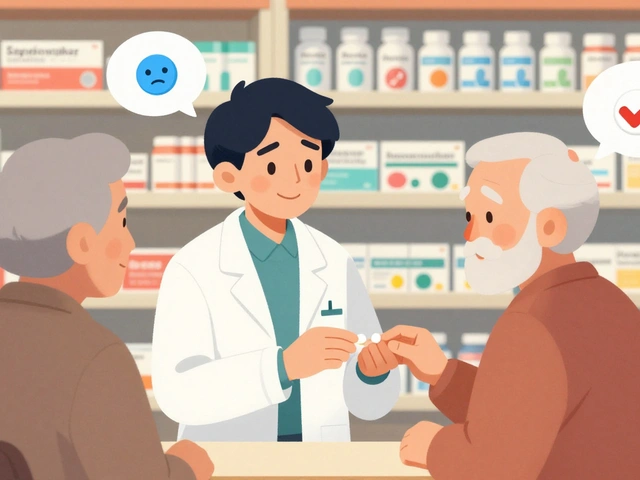
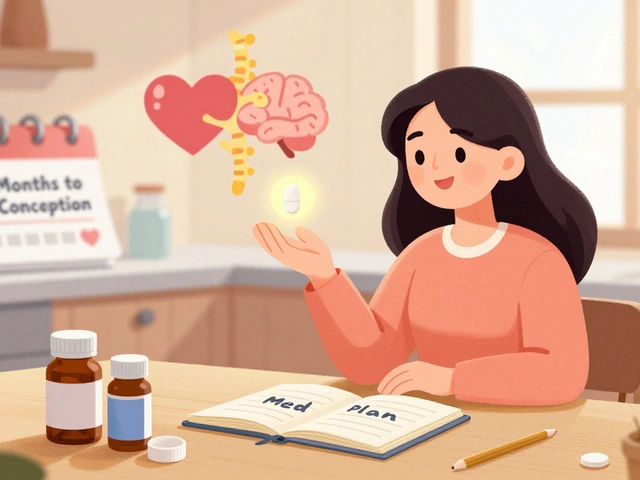
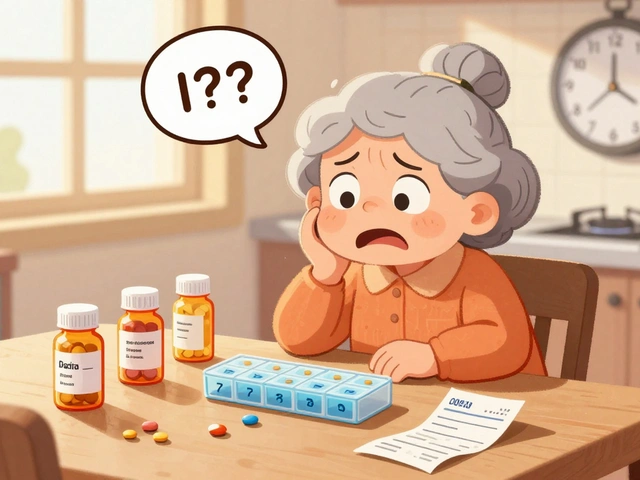
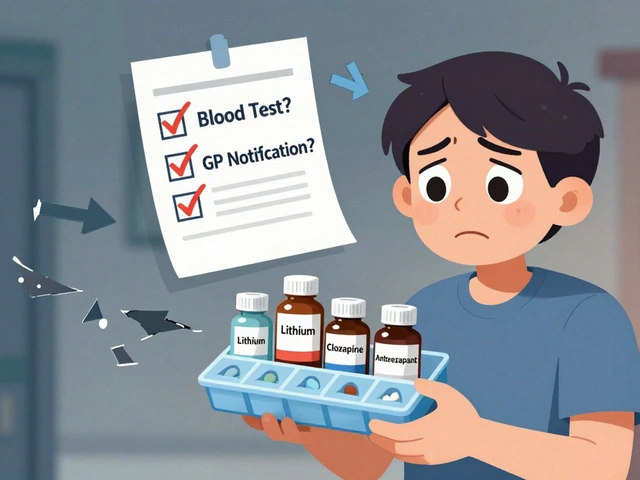
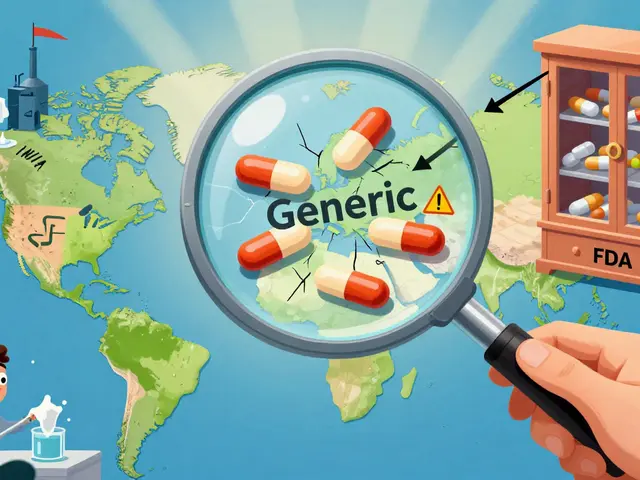

Write a comment